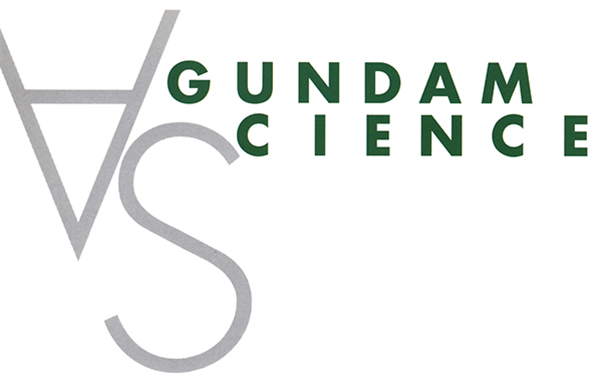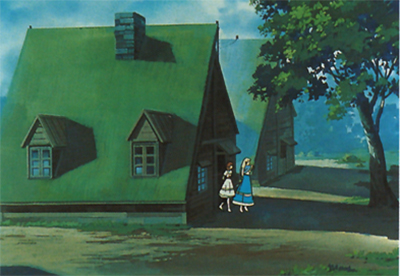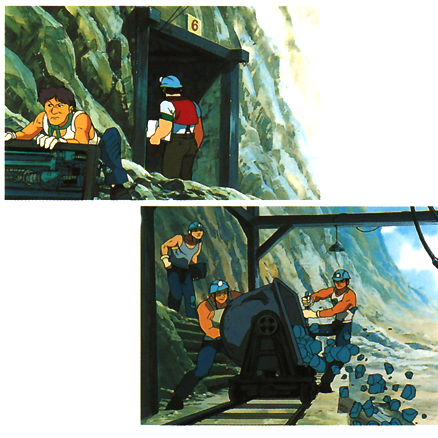Now that I have a novelization project finished up, I’m trying to figure out how to balance my time with relatively obscure Gundam-related material. So, much like the “Translation Tuesday” posts for novel chapters, I decided on “Framework Friday” for Gundam background material. Aren’t I so clever? I guess that means there will eventually be a “Manga Monday” at some point in the future. Oh god. Stop me now, please! Anyways, I posted about some Turn A Gundam goodness quite a while back, but I decided to go back and review the information prior to it since it sets the stage quite nicely! Anyways, enjoy!

Electrical Civilization
One of the two bases of civilization in the Correct Century world is electricity. This is primarily due to the widespread usage of solar cells (commonly known as solar-powered turf), which are incredibly efficient in converting light energy and have the ability to self-replicate. This solar-powered turf is a product of nanotechnology from the old era; however, people in the Correct Century era take it for granted that it is just a different kind of plant that grows wildly in nature.
The power generation capacity of the solar-powered turf is sufficient to meet a single family’s needs. Furthermore, since each household is generally equipped with fuel cells made up of the hydrogen-absorbing alloy “phlogi-stone,” they can receive a minimum amount of power even in cloudy or rainy weather or at night when power generation stops.
On the other hand, in urban and industrial areas that require vast amounts of electricity, electrical power is supplied from hybrid power plants that combine hydrogen internal combustion engines with wind and hydroelectric power, thus maintaining social infrastructures. What’s more, the motors driven by the electric power obtained in these manners are used as dead-copies of the old era’s relics without improvements or analysis.
There was once a time when energy was transmitted from power generation satellites in outer space. However, these were destroyed in battle relatively early on, and no attempts were made to rebuild them after that. All of the ground-based transmission facilities have been lost and are no longer functioning. Some of these facilities are now known to the people as the “Mountain Cycle.”

Every house in the world of Turn A has a green roof because it is covered with solar-powered panels planted with solar-powered turf made from nanomachines.
Phlogi-stones & Internal Combustion Engines
Along with electricity, another pillar that supports the Correct Century civilization is the hydrogen internal combustion engine. This involves burning hydrogen by reacting it with oxygen and utilizing the energy produced by the reaction. This reaction produces zero emissions other than steam or water and doesn’t pollute the environment.
The hydrogen internal combustion engine was created through advanced technology. People in the Correct Century simply build and use them blindly without improvements in the same way as electric motors.
Fuel for the hydrogen internal combustion engines is supplied by an ore called a phlogi-stone, an extremely efficient hydrogen-absorbing alloy (aka an alloy endowed with properties to store hydrogen in its structure). In the old era, phlogi-stone were created by nanomachines. Yet, in the Correct Century era, they are treated like naturally occurring coal and gasoline, powering the engines of cars, aircraft, and industrial machinery.
Urban areas are dotted with phlogi-stone stations, just like the gasoline and charging stations of the old era, so that fresh phlogi-stones can be supplied at any time for vehicles traveling around the city and household fuel cells.
These phlogi-stones are recyclable, and once the stored hydrogen has been depleted, they’re collected through phlogi-stone stations and sent back to specialists. These depleted phlogi-stones are then dumped into the ocean, where they take a considerable amount of time to reabsorb hydrogen. These companies make their living by mining and regenerating phlogi-stones, going back and forth to the coastline every year to provide people with a pollution-free source of energy.

The size of a phlogi-stone is 5-6mm in diameter. It has an irregular and complex tetrapod shape, which is white when it contains hydrogen but turns black when the hydrogen is depleted.
Mineral Resources
Past prosperity saw the consumption of Earth’s mineral resources, which were essential for maintaining civilization. To compensate for this, many resource asteroids were towed near Earth in the old era and played a role in supplying various minerals. Some of these asteroids were decelerated and forced to make soft landings on Earth.
Many of the deposits being mined on Earth in the Correct Century today are resource asteroids brought from space during the old era. The Vicinity mine owned by the Heim family is believed to be one of these asteroid mines.
It also appears that some of the mines in other areas have remains of space colonies that were dropped from space during the wars of the old era.

The entrance to the Heim mine and the people working there. Aluminum and other metals from the wreckage of the old era are mainly mined here.



 March 12th, 2021
March 12th, 2021  deackychu
deackychu  Posted in
Posted in 
